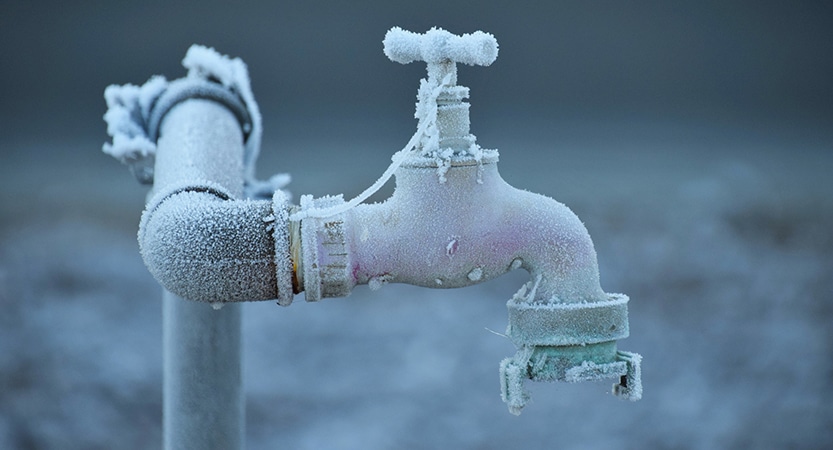What're your thoughts and feelings about Winter Plumbing Precautions: Preventing Frozen Pipes?

Cold weather can ruin your pipes, especially by freezing pipelines. Here's just how to stop it from taking place and what to do if it does.
Introduction
As temperatures drop, the threat of frozen pipelines boosts, possibly resulting in pricey repair services and water damage. Recognizing just how to stop frozen pipelines is crucial for house owners in cool climates.
Recognizing Frozen Pipes
What creates pipelines to ice up?
Pipes freeze when revealed to temperatures listed below 32 ° F (0 ° C) for extended periods. As water inside the pipes freezes, it increases, putting pressure on the pipe walls and possibly creating them to break.
Dangers and problems
Icy pipelines can cause water interruptions, residential property damages, and costly repair services. Burst pipelines can flooding homes and trigger comprehensive architectural damage.
Signs of Frozen Pipes
Identifying icy pipes early can prevent them from breaking.
Exactly how to determine icy pipes
Try to find decreased water circulation from faucets, uncommon odors or noises from pipelines, and visible frost on revealed pipelines.
Prevention Tips
Insulating vulnerable pipelines
Cover pipes in insulation sleeves or make use of warmth tape to safeguard them from freezing temperature levels. Focus on pipes in unheated or outside areas of the home.
Home heating strategies
Keep interior areas adequately heated up, specifically locations with pipes. Open closet doors to permit cozy air to circulate around pipes under sinks.
Safeguarding Exterior Pipes
Yard tubes and exterior taps
Detach and drain garden hose pipes before winter. Set up frost-proof spigots or cover exterior faucets with protected caps.
What to Do If Your Pipes Freeze
Immediate activities to take
If you think icy pipes, keep taps available to relieve pressure as the ice thaws. Utilize a hairdryer or towels soaked in warm water to thaw pipelines slowly.
Long-Term Solutions
Architectural changes
Think about rerouting pipelines far from exterior walls or unheated locations. Include extra insulation to attic rooms, basements, and crawl spaces.
Upgrading insulation
Invest in premium insulation for pipes, attics, and walls. Appropriate insulation helps maintain consistent temperatures and reduces the risk of frozen pipes.
Conclusion
Avoiding frozen pipes requires proactive actions and fast actions. By recognizing the reasons, indications, and preventive measures, homeowners can protect their pipes throughout cold weather.
5 Ways to Prevent Frozen Pipes
Drain Outdoor Faucets and Disconnect Hoses
First, close the shut-off valve that controls the flow of water in the pipe to your outdoor faucet. Then, head outside to disconnect and drain your hose and open the outdoor faucet to allow the water to completely drain out of the line. Turn off the faucet when done. Finally, head back to the shut-off valve and drain the remaining water inside the pipe into a bucket or container. Additionally, if you have a home irrigation system, you should consider hiring an expert to clear the system of water each year.
Insulate Pipes
One of the best and most cost-effective methods for preventing frozen water pipes is to wrap your pipes with insulation. This is especially important for areas in your home that aren’t exposed to heat, such as an attic. We suggest using foam sleeves, which can typically be found at your local hardware store.
Keep Heat Running at 65
Your pipes are located inside your walls, and the temperature there is much colder than the rest of the house. To prevent your pipes from freezing, The Insurance Information Institute suggests that you keep your home heated to at least 65 degrees, even when traveling. You may want to invest in smart devices that can keep an eye on the temperature in your home while you’re away.
Leave Water Dripping
Moving water — even a small trickle — can prevent ice from forming inside your pipes. When freezing temps are imminent, start a drip of water from all faucets that serve exposed pipes. Leaving a few faucets running will also help relieve pressure inside the pipes and help prevent a rupture if the water inside freezes.
Open Cupboard Doors
Warm your kitchen and bathroom pipes by opening cupboards and vanities. You should also leave your interior doors ajar to help warm air circulate evenly throughout your home.

I recently found that post on Preventing and dealing with frozen pipes when doing a lookup on the internet. Are you aware of another person who is in the market for the subject? Do not hesitate to share it. We thank you for your readership.
Call Today
Comments on “Tips to Protect Your Pipes from Cold Weather: Specialist Tips”